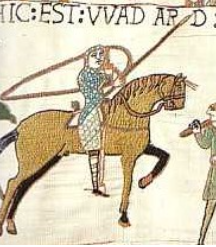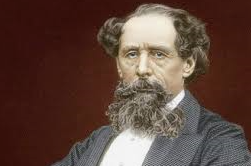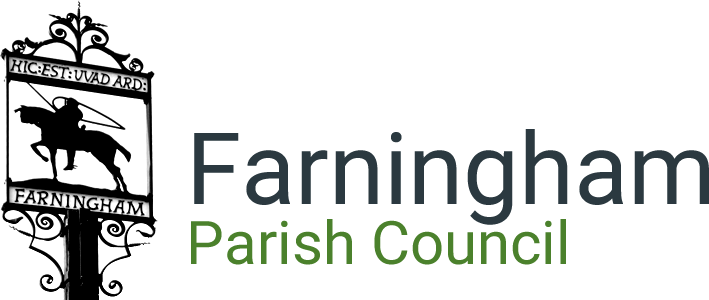Our Story
Early Beginnings
As with other villages along the Darent Valley, Farningham has unearthed evidence of Neolithic life, with the discovery of prehistoric worked flint and other tools that now reside in the Dartford Borough Museum.
This suggests to historians that Calfstock Lane may have been part of a prehistoric track way that wound its way across the North Downs. This in turn would inevitably have brought these early settlers to the banks of the river Darent where fish were plentiful, and the surrounding alluvial soil was rich and fertile for the planting of crops and grazing of livestock. The first concrete evidence of a definite settlement came along in the Iron Age: in 1973 archaeologists excavated the foundations of a small farmstead. Storage pits were discovered along with commercially thrown pottery and delicate jewellery, this suggested to the experts that there was some kind of trading going on. It is from this era that the Darent was named: it translates as "oak-tree river".
The Romans Arrive
The next major settlers were the Romans. Farningham boasts no fewer than six sites: three villas and three farmsteads. In fact, Roman villas were built along the entire length of this beautiful valley for the same reason that the earlier Iron Age folk decided to reside in this plentiful area. Archaeologists have built up a picture of these homesteads, with ornate wall paintings, tessellated floors, the elaborate baths and heating systems that were soon to be forgotten by the new settlers after the Romans left in the early part of the 5th century. In the 1930s a Saxon cemetery was partially unearthed at Charton Manor revealing some fascinating objects such as daggers, spears and other artefacts. It is generally thought that a riverside settlement is buried beneath the present-day village and it is in these Saxon times that the name Farningham comes into being. Experts believe that the name derives from one of two meanings, the first being the home of Ferningas loosely translating into people living in a ferny place, or the Friningas, the freemen. The first landlord appeared in the Christian Anglo-Saxon period, his name was Alphege, Archbishop of Canterbury, who gave land here to Canterbury priory, in 1010, possibly for a church. Alphege was unfortunately martyred at the hands of the Vikings at Greenwich in 1012 and was later canonised.
The Doomsday Book
At the compilation of the Doomesday Book in Norman times, Farningham had four 'manors' or farm hamlets, the largest being Charton that was then owned by Ansgot of Rochester. 18 peasant families lived there, farming about 200 acres of land. Wadard, whose claim to fame was to be depicted on the Bayeux Tapestry as the commandeer of provisions from the natives at the battle of Hastings, held one of the other Farningham manors. This depiction of Wadard is commemorated in Farningham village sign.
By the 12th century, the most important family in Farningham was the de Cheriton from Folkestone; it is from their name that Charton come. Their eldest son, Odo de Cheriton, is one of the few people of Farningham who has gained a mention in the Dictionary of National Biography. In the 13th century, a new family the de Freminghams held the manor. In 1270 Ralph de Fremingham was granted the right to hold a weekly market and an annual fair. The 14ft thick walls of his castle were discovered at market meadow in 1972. The market and fair thrived for many centuries, providing work for the local inhabitants.

The depiction of Wadard from the Bayeux Tapestry
Revolting Peasants
Despite the obvious good that the de Freminghams brought to Farningham, they were not altogether popular, being responsible for the introduction of sheriffs. It was in 1381 that Sir John de Fremingham was abducted and narrowly escaped assassination in the Peasants Revolt.
The 1300s and 1400s brought further development in the village. As with most Kent communities, life revolved around the church and manor. Very little remains of 15th century Farningham, apart from the church. At this time the walls and saintly statues would have been brightly painted. One of the vicars of the time was William Gylborne, who now has a plaque on the chancel floor. One family that seemed to feel the wrath of the local inhabitants was the lsley. William Isley was named as one of the four great extortioners of Kent: he had been sheriff, an MP and JP who had blatantly abused his office. In 1461, Jack Cade and his followers hunted him down in Farningham where he was duly murdered in a bedroom at the vicarage. A later Isley, Sir Harry, was tried and executed for treason in 1554. After the demise of the Isleys, the Roper family purchased the family home. The youngest son, Anthony, who inherited the house on his father's death in 1577, proved to be a good landlord and a generous benefactor. On his death in 1597, he left property to a charity for the poor of Farningham, Eynsford and Horton Kirby, which to this day still raises an annual income of £7000.
A close shave with The Black Death
Life in 17th century is well documented. Weavers, saddle makers, blacksmiths and publicans were thriving along with a butcher and a miller. In 1625 Farningham had a close shave with the plague when Thomas Newington rode down from London unaware that he was carrying the infection. Within 2 weeks, Thomas, his wife, daughter, brother and three servants were all dead. Fortunately for Farningham, they lived at Pedham Place and the disease did not spread to the village centre. Farningham was affected by the conflict in the late 18th century - early 19th century called the Napoleonic Wars. Two versions of the home guard were formed. Firstly, the Farningham troop of Yeomanry Cavalry, commanded by Captain Dyke of Lullingstone and secondly the Farningham Riflemen. There was recruitment during the wars and the roads were packed with troops following the fife and drums and regimental standards, heading for mainland Europe and an uncertain future. Farningham provided billeting and wagons and there were barracks at The Lion Hotel.
Tickling Trout

Charles Dickens visited Farningham for the excellent trout fishing
x
By the 19th century, Farningham was a thriving community, six stagecoaches passed through per day, employment was good, there were 2 small private schools, all the shops that a village required and a police constable and postmaster. Charles Dickens would visit to participate in the excellent trout fishing that the Darent provided and Admiral Bligh of the Bounty rented accommodation there. In the 1860s, industry arrived in the form of William Day's Ironworks. He is believed to have won a gold medal for his agricultural machinery at the Great Exhibition.
In the 20th century, horse-drawn coaches gave way to cars and buses, and the population swelled from 586 in 1821 to 1328 in 1901, a figure that is not too different today.

For many years a World War One tank resided in the Village, outside what is now Acer House Practice. It was presented by the War Office as a War Trophy to Farningham and accepted in view of the important part played in its design by Major W.G. Wilson C.M.G. who lived in Farningham. Although the War Office donated the tank and paid for the crew to be billeted for the night at The Lion Hotel they refused to pay the £5 10s. required for the purchase of oil and petrol to drive the tank from Swanley Junction to the Village and this was born by the Council.
Although the tank was very popular the cost of maintaining it became prohibitive and it was sold for scrap during the Second World War.
With thanks to Hilary & Wilfrid Harding and the Farningham & Eynsford Local History Society.
Farningham's fascinating and unique history are faithfully recorded 'Farningham and its Mill' which can be purchased from Wadard Books in the High Street.
